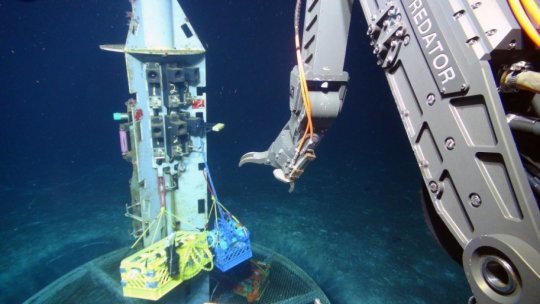[ad_1]
A new study has revealed how a group of deep-sea microbes provides clues to the evolution of life on Earth, according to a recent paper in The ISME Journal. Researchers used cutting-edge molecular methods to study these microbes, which thrive in the hot, oxygen-free fluids that flow through Earth’s crust.
Called Hydrothermarchaeota, this group of microbes lives in such an extreme environment that they have never been cultivated in a laboratory for study. A research team from Bigelow Laboratory for Ocean Sciences, the University of Hawai’i at Manoa, and the Department of Energy Joint Genome Institute bypassed the problem of cultivation with genetic sequencing methods called genomics, a suite of novel techniques used to sequence large groups of genetic information. They found that Hydrothermarchaeota may obtain energy by processing carbon monoxide and sulfate, which is an overlooked metabolic strategy. The microbes use energy from this process to grow as a form of chemosynthesis.
“The majority of life on Earth is microbial, and most microbes have never been cultivated,” said Beth Orcutt, a senior research scientist at Bigelow Laboratory and one of the study’s senior authors. “These findings emphasize why single cell genomics are such important tools for discovering how a huge proportion of life functions.”
Analyzing Hydrothermarchaeota genomes revealed that these microbes belong to the group of single-celled life known as archaea and evolved early in the history of life on Earth — as did their unusual metabolic processes. These observations suggest that the subsurface ocean crust is an important habitat for understanding how life evolved on Earth, and potentially other planets.
The researchers also found genetic evidence that Hydrothermarchaeota have the ability to move on their own. Motility offers a valuable survival strategy for the extreme environment they call home, which has a limited supply of nutrients essential to life.
“Studying these unique microbes can give us insights into both the history of Earth and the potential strategies of life on other planets,” said Stephanie Carr, first author on the paper and a former postdoctoral researcher with Orcutt who is now an assistant professor at Hartwick College. “Their survival strategies make them incredibly versatile, and they play an important, overlooked role in the subsurface environments where they live.”
In 2011, Orcutt and other project scientists sailed to the flank of the Juan de Fuca Ridge, a mid-ocean ridge off the coast of Washington where two ocean plates are separating and generating new oceanic crust. They used Woods Hole Oceanographic Institution’s deep-diving robot Jason to travel 2.6 km to the seafloor and collect samples of the fluid that flows through the deep crust.
These crustal fluids contained microbes that had never before been studied. Working in partnership with the Department of Energy Joint Genome Institute, the researchers sorted and analyzed the microbes in the Single Cell Genomics Center at Bigelow Laboratory. This cutting-edge research facility is directed by Ramunas Stepanauskas, a senior research scientist and study author. The project team also analyzed the microbes using metagenomics, a technique that extracts genomic information directly from environmental samples. These analyses yielded insights into the genetic blueprints of Hydrothermarchaeota, their relationship to other archaea, and the strategies they have evolved to survive in the subseafloor.
The researchers will build upon this discovery when they return to the Juan de Fuca Ridge in May 2019 to continue investigating the extreme microbes thriving below the seafloor. Orcutt will lead a cruise using ROV Jason with this team of researchers to further explore the subseafloor environment, leveraging funding from the National Science Foundation and NASA.
“The microbes living ‘buried alive’ below the seafloor are really intriguing to us, since they can survive on low amounts of energy,” Orcutt said. “We hope that our experiments on these weird microbes can show how they do this, so we can imagine how life might exist on other planets.”
Story Source:
Materials provided by Bigelow Laboratory for Ocean Sciences. Note: Content may be edited for style and length.
[ad_2]















